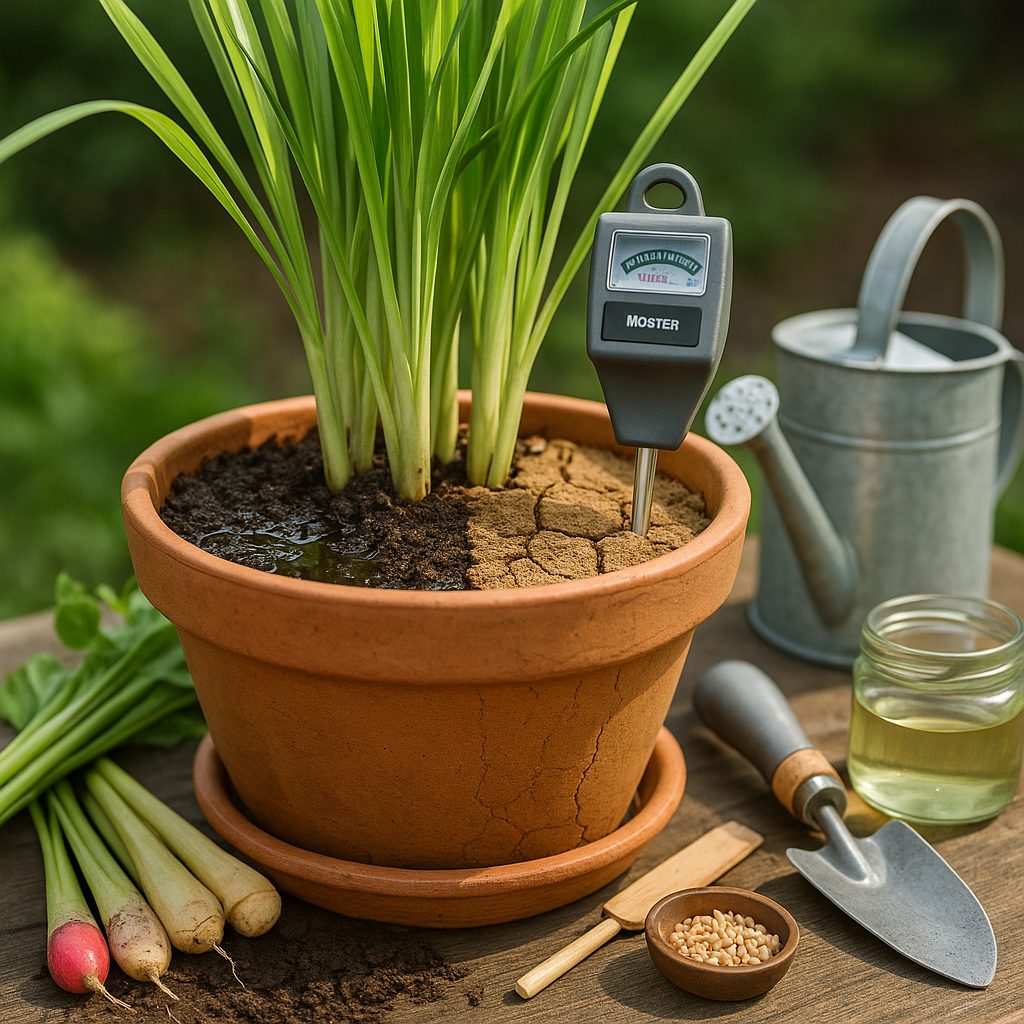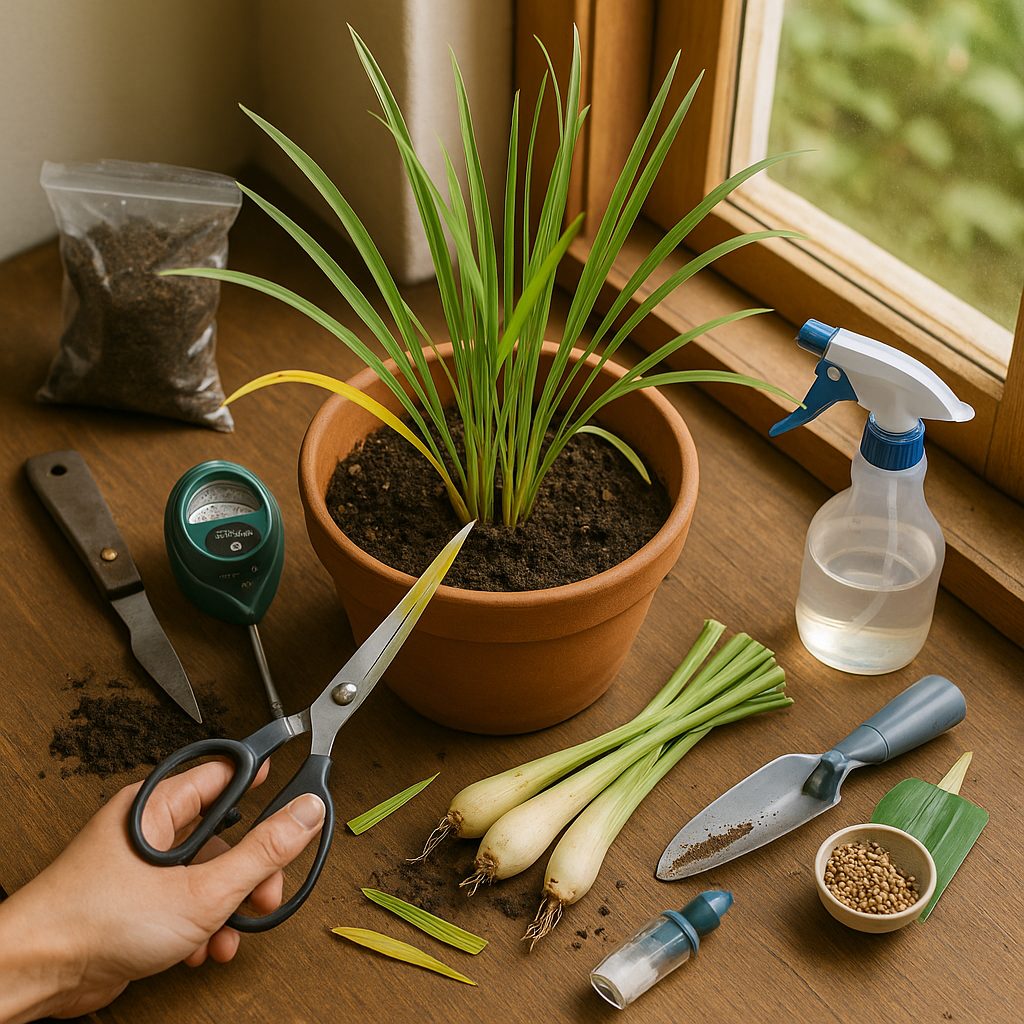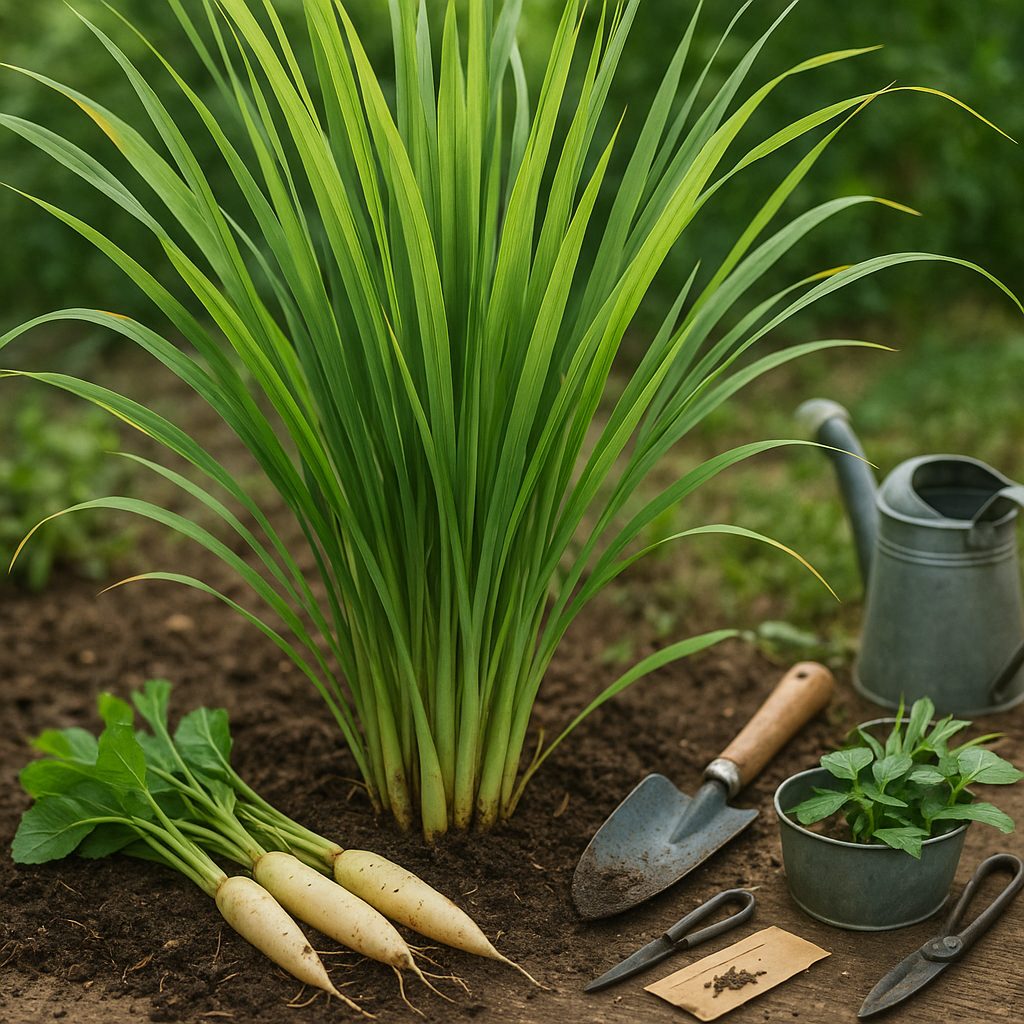Understanding Why Lemon Grass Leaves Turn Yellow
Noticing yellow lemongrass leaves on your once-vibrant plant can be concerning, especially if you’re unsure what caused the change. This yellowing isn’t just an aesthetic issue—it’s often a clear sign that your lemongrass is stressed or out of balance with its environment.
In most home gardens, the most common culprits are water-related problems, nutrient deficiencies, poor light exposure, pests, or diseases. For example, overwatering can lead to soggy roots and eventual yellowing, while underwatering leaves lemongrass dry and struggling. If your plant isn’t getting enough essential nutrients like nitrogen, the leaves may lose their healthy green color and fade to yellow. Similarly, insufficient sunlight can leave lemongrass weak, pliable, and lacking its signature zest.
Pests like spider mites or leafhoppers, as well as fungal diseases, can also sap your plant’s vigor, often showing up first as yellowing leaf tips or patches. Recognizing yellow lemongrass leaves as an early warning sign can help you act quickly before the problem worsens.
Instead of guessing, take a closer look: is your soil draining properly? Does your plant receive enough sun? Is there visible damage or webbing on the leaves? Each cause requires a different solution, and understanding what’s behind the yellowing is the first step toward restoring your plant’s health.
In the sections that follow, we’ll dive into targeted fixes so you can bring your lemongrass back to its lush, green best.
Troubleshooting Watering Issues

Yellow leaves on your plants often signal watering problems, with overwatering and underwatering being the usual suspects. Overwatering drowns the roots, causing them to rot and lose their ability to absorb nutrients, which makes the leaves turn yellow and feel limp. On the other hand, underwatered plants can’t pull in enough moisture, resulting in yellow leaves that are crispy and dry at the edges.
To pinpoint the issue, check your soil:
- Soggy, smelly, or saturated soil indicates too much water.
- Dry, hard clumps mean your plant is thirsty.
Also, watch the leaf tips—wilted or browning edges can give you another clue. The key to healthy plants is adjusting your watering routine according to the climate and season.
In hot, sunny periods, increase watering frequency, but make sure water drains well to avoid soggy roots. During cooler months or rainy spells, cut back to prevent overwatering. A good rule of thumb is to feel the top inch of soil: if it’s dry, it’s time to water; if it’s still moist, wait a day or two.
Always consider your plant species and use containers with drainage holes for the best results. These simple habits can keep your plants thriving year-round.
Navigating Nutrient Deficiencies and Soil Health
Nitrogen and iron are two key nutrients that directly affect the color and overall health of plant leaves. When a plant lacks nitrogen, its older leaves often turn pale green or yellow, starting at the tips—this condition is called chlorosis. Iron deficiency, however, appears as yellowing between the veins of young leaves while the veins themselves remain green, a clear sign that helps gardeners diagnose the problem quickly.
To check your soil’s nutrient status, many garden centers offer simple soil test kits that detect shortages of both nitrogen and iron with easy-to-interpret results. If you confirm a deficiency, there are several effective remedies:
- For organic gardeners, composted manure, fish emulsion, or blood meal are excellent choices to boost nitrogen while also improving soil structure.
- To address iron deficiency organically, try applying chelated iron or iron sulfate, and consider mulching with compost to improve iron availability.
- For chemical solutions, nitrogen-rich fertilizers such as ammonium nitrate or urea deliver rapid results, while products labeled as iron chelate or ferrous sulfate efficiently tackle iron shortfalls.
Whichever route you choose, always follow label instructions to avoid over-fertilizing, and water thoroughly to ensure nutrients reach plant roots. By staying vigilant and selecting the right amendments, you can restore your plants’ vibrant green color and support long-term soil health.
Preventing and Managing Pests & Diseases
Lemongrass is generally hardy, but it isn’t immune to pesky invaders like aphids and spider mites, or fungal issues such as rust and leaf blight. Early signs of trouble often include yellow or brown leaf spots, a sticky residue (called honeydew) left by sap-sucking pests, or slow, stunted growth.
Spider mites may also create tiny webs under the leaves, while rust fungus forms small orange or brown pustules. To prevent outbreaks, keep your plants healthy by spacing them well for good air circulation and avoid overhead watering, which can encourage fungi.
Regularly check the leaves—especially the undersides—for pests and signs of disease. If you spot aphids or mites, try spraying the plants with a strong blast of water or apply insecticidal soap or neem oil, both of which are organic and safe for most home gardeners.
For fungal issues, trim off affected leaves promptly and consider a biofungicide like copper-based sprays if infections persist. In cases of severe infestation or if organic methods fail, a targeted chemical pesticide or fungicide labeled safe for edible plants can be used. Always follow application directions carefully to protect both your plants and the environment.
Consistent garden hygiene—such as removing dead foliage and rotating crops—also reduces pest and disease pressure, helping your lemongrass thrive season after season.
Environmental and Cultural Practices for Healthy Leaves
Getting the environment right is key to preventing yellow leaves and keeping your plants thriving. Sunlight is crucial, but too much direct exposure can scorch leaves or cause them to fade, while too little slows growth and turns them yellow. Pay attention to your plant’s natural habitat—shade lovers like ferns should be kept away from south-facing windows, while sun-loving succulents soak up bright light best.
Temperature swings also stress plants; sudden chills or hot drafts from open windows or radiators can disrupt their growth. Aim for consistent room temperatures and keep plants away from blasts of hot or cold air. Good air circulation helps prevent fungal diseases, but avoid placing plants right under vents or in drafty corridors, which can dry them out.
When grouping plants, give each enough space for air to circulate around their leaves; overcrowded plants trap moisture and invite disease, leading to yellowing. A smart spacing rule is to keep at least a few inches between pots and avoid cramming too many plants on a single shelf.
Cultural practices make a big difference as well: regularly prune crowded stems and thin out dense foliage to allow light and air to penetrate deeper, helping all leaves stay healthy. Routinely snip off any yellow, damaged, or dead leaves with clean scissors—this not only makes your plant look better but also stops the spread of disease.
Finally, wipe leaves gently with a damp cloth to remove dust, which can otherwise block sunlight from reaching the plant and slow down photosynthesis. With these habits, you’ll reduce the risk of yellowing and help your houseplants recover faster from stress.
Step-by-Step Recovery and Long-Term Care

To revive yellowing lemongrass, start by removing any dead or discolored leaves using clean scissors to prevent the spread of disease. Check the soil moisture—lemongrass prefers slightly damp, well-draining soil, so water it when the top inch feels dry.
Make sure your plant gets at least six hours of direct sunlight daily. If you’re growing it indoors, move it closer to a sunny window or use a grow light. Feed the plant every month during the growing season with a balanced, diluted fertilizer to support healthy regrowth.
Long-term care is just as important:
- Establish a weekly routine to inspect leaves for early signs of yellowing or pests.
- Rotate the pot regularly to ensure even sun exposure.
- Mulch around the base to retain moisture and keep roots cool.
Preventative care goes a long way—avoid overwatering, which can cause root rot, and stay alert to any sudden changes in your plant’s appearance. If yellowing persists despite these efforts, or if you notice wilting, moldy roots, or spreading damage, it might be time to consult your local nursery or a plant expert. They can diagnose underlying issues like fungal infections or nutrient deficiencies, helping your lemongrass thrive for seasons to come.
Quick Reference FAQ: Lemon Grass Yellowing Problems
If your lemongrass leaves are turning yellow, you might wonder if the plant can recover. In most cases, once a leaf has turned yellow, it won’t regain its green color, so it’s best to trim those leaves to keep the plant healthy.
Yellowing often happens from overwatering or poor drainage, so check your soil and let it dry out between waterings.
Can yellow leaves mean a nutrient problem? Yes—lemongrass needs regular feeding, so try using a balanced liquid fertilizer or compost every few weeks during the growing season.
Should all yellow leaves be cut off? Trim the most damaged ones, but if only the tips are yellow, snip just those parts.
Finally, is yellowing ever normal? Sometimes older leaves naturally yellow and die as new ones grow, so don’t worry if it’s just a few. Regular care will keep your lemongrass green and thriving.
